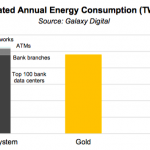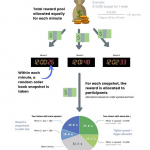On May 2, 2023, the Biden administration unveiled a blog post outlining the Digital Asset Mining Energy (DAME) tax, featured in the president’s comprehensive 182-page budget proposal for the fiscal year 2024. The DAME tax targets “making crypto miners pay for the costs they impose on others” regarding the environmental impact of crypto mining activities.
Crypto Miners Could Face Gradually Increasing Tax With Biden’s DAME Proposal
With the White House’s Council of Economic Advisors expressing alarm over the so-called climate crisis, Biden’s administration argues that crypto asset mining’s energy consumption brings about “negative spillovers on the environment, quality of life, and electricity grids where these firms locate across the country.”
To address these environmental costs, the White House believes that the Digital Asset Mining Energy (DAME) tax will encourage companies to “start taking better account of the harms they impose on society.” The DAME tax intends to levy a gradually increasing tax on crypto asset miners in the United States, ultimately reaching 30%.
In the blog post, the White House refers to a recent New York Times article that was accused of being a biased “one-side hit piece” that relied on dated data while offering no counterarguments. Moreover, the Biden administration includes a comparison between electricity used for mining and power consumption concerning America’s residential lighting – a tactic viewed as deceptive in making readers believe that technology is stealing energy resources earmarked for human use.
However, this comparison neglects to factor in benefits provided by applied direct response systems or current research findings from ESG analyst Daniel Batten. The Biden administration’s message fails to acknowledge renewable energy sources leveraged by bitcoin miners or how mining can mitigate flare emissions.
Even so, the White House contends that miners who utilize renewable energy actually “reduce the amount of clean power available for other uses,” leading to increased prices for consumers. The term “dirty” is employed numerous times when referencing supposedly “dirtier sources of electricity.”
Lastly, the White House highlights that the DAME tax represents “only one example of the administration’s efforts to fight climate change.” It serves as merely the “start of having crypto miners pay their fair share of the costs imposed on local communities and the environment.”
What are your thoughts on the DAME tax proposal? Do you believe it will effectively address the alleged environmental costs of crypto mining, or do you think it unfairly targets the mining industry? Share your opinions in the comments section below.










